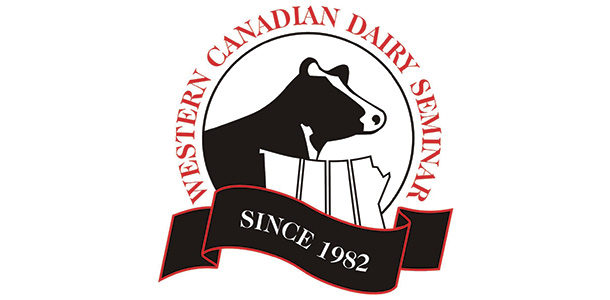The seminar is designed for people who want to improve their knowledge and decision-making abilities in dairy production and management. Dairy producers, extension specialists, researchers and dairy service and supply representatives will find this seminar valuable.
A wide variety of topics will be presented, ranging from herd health and calf management to nutrition and reproduction. This year there will also be a focus on the people side of the dairy business.
The event will be held March 11-14 at the Sheraton Red Deer in Red Deer, Alberta. With the theme, “Strategies to Optimize Performance,” the seminar will focus on ways to make a dairy farm more efficient.
The week begins with a pre-conference tour of three local dairy farms, a pre-conference mastitis workshop for dairy producers and a pre-conference symposium for nutritionists.
Seminar sessions throughout the week include efficiency from cow to farm, dairy herd health, the pre-weaned calf, nutrition to optimize performance and economic returns, breeding and reproduction, the people side of dairying, and disease issues and management.
Further details are available on the website. For additional conference information contact Joanne Morrison, conference coordinator or (780) 492-3236.
To kick off the seminars on March 12, four speakers will present their take on farm efficiencies. Below, three of the four speakers answer a couple of questions about their presentations.
In addition to those listed for this plenary session, Diane Spurlock from Iowa State University will present “Can genomics be used to improved feed efficiency?”
How high feed efficiency reduces the environmental impact of the dairy

Frank Mitloehner
University of California – Davis
Why is this topic important?
MITLOEHNER: High-production efficiencies are often considered a detriment of modern agriculture. It is popular to believe that high productivity in animal agriculture goes hand-in-hand with environmental pollution.
We have found out that the opposite is the case: The more efficient the cows are, the smaller the environmental footprint of the herd.
What do you hope attendees will take away from this presentation?
MITLOEHNER: Today it is widely accepted in the scientific community that researches livestock issues that the only path forward to feeding a growing planet is through sustainable intensification.
The areas in the world that show the greatest increase in demand for livestock products will have to change their productivity or indeed fail to meet the 2050 task to feed their growing human population with the nutritious food they require.
Livestock producers in North America have shown effective ways to optimize productivity, thus limiting environmental footprint, and it is time to convey this fact with the public at large.
Feeding and breeding for a more efficient cow
Michael VandeHaar
Michigan State University
Why is this topic important?
VANDEHAAR: Feed costs are more than half of the costs associated with dairy farming, so feed efficiency matters to profitability. In addition, if we are going to feed nine billion people in a way that is environmentally sustainable, we have to improve feed efficiency.
What do you hope attendees will take away from this presentation?
VANDEHAAR: The efficiency of converting feed to milk has doubled in North America during the past 50 years, largely as a byproduct of selecting, feeding and managing cows for increased productivity.
However, in the future, we must specifically focus on how to get more milk from each unit of feed rather than simply on how to get more milk from each cow.
Feed efficiency can be defined many ways, from simply considering energy inputs and outputs of the cow to considering all inputs and outputs of the dairy industry on a global scale that impact environmental stewardship.
These are generally correlated because higher-producing cows use less feed for maintenance.
The optimal level of production to maximize biological feed efficiency is likely 10,000 to 15,000 kilograms milk per year for Holsteins that weigh approximately 700 kilograms at maturity. However, for profitability, higher production is still probably better.
Management strategies to feed cows according to lactation stage will enhance efficiency of using feed energy and protein.
Nutritionists, however, should not focus too much on efficiency; rather, the focus should be on milk income above feed cost, which requires monitoring farm management and cow responses to diet changes. In addition, farm feed efficiency can be improved by minimizing feed wastage.
Genomic technologies likely will enable selection of more efficient cows in the future. In the meantime, breeding for small cows might improve efficiency, but if bigger cows produce more milk, they are just as efficient and probably more profitable.
We should stop using size as selection criterion unless we want uniform body size to fit stalls. Instead we should breed for production, health and fertility.
Strategies to improve economic efficiency of the dairy
Victor Cabrera
University of Wisconsin
Why is this topic important?
CABRERA: Farmers need to remain economically feasible to survive in a competitive and highly volatile market environment. This is universal and applies whether the farmer is located in Canada, the U.S., Europe or anywhere else.
Therefore, farmers have to strive for economic sustainability at all times, which is achieved by mastering management strategies that improve economic efficiency. My talk will focus on research performed and the accompanying tool to help dairy farmers consider lactating cows’ nutritional grouping strategies to improve economic efficiency.
What do you hope attendees will take away from this presentation?
CABRERA: Attendees will become well aware of all the decision
support tools for dairy farm management openly and freely available at the University of Wisconsin Dairy Management website and will be deeply introduced to nutritional grouping concepts and the accompanying decision support tool, which could help them consider additional nutritional grouping strategies for improved economic efficiency.
At the end of the presentation, attendees will feel comfortable using the decision support tool “Grouping Strategies for Feeding Lactating Dairy Cattle” and confident in the application of the results. PD









